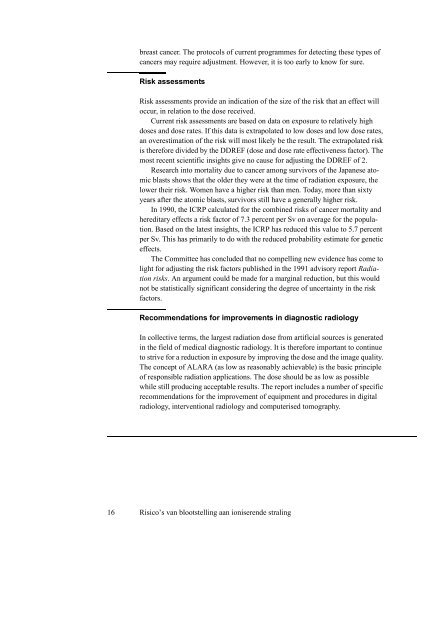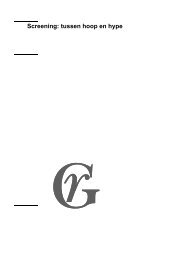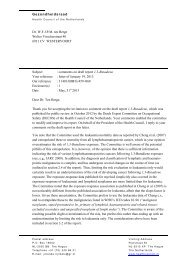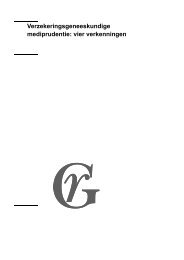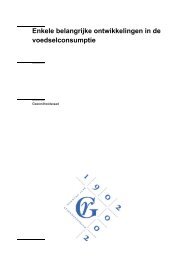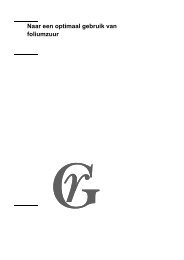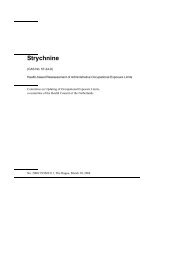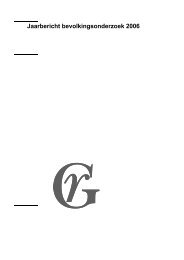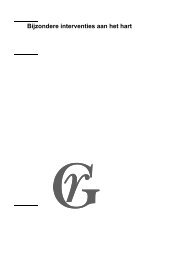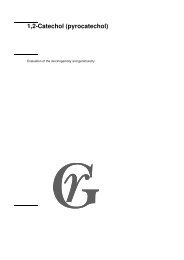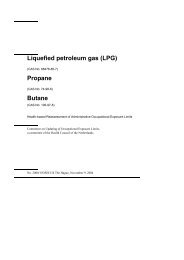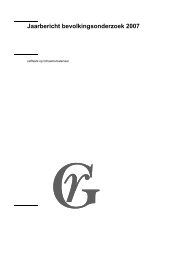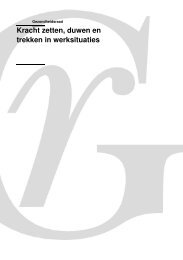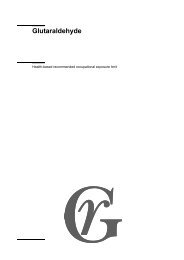hoofdstuk 2 - Gezondheidsraad
hoofdstuk 2 - Gezondheidsraad
hoofdstuk 2 - Gezondheidsraad
Create successful ePaper yourself
Turn your PDF publications into a flip-book with our unique Google optimized e-Paper software.
east cancer. The protocols of current programmes for detecting these types of<br />
cancers may require adjustment. However, it is too early to know for sure.<br />
Risk assessments<br />
Risk assessments provide an indication of the size of the risk that an effect will<br />
occur, in relation to the dose received.<br />
Current risk assessments are based on data on exposure to relatively high<br />
doses and dose rates. If this data is extrapolated to low doses and low dose rates,<br />
an overestimation of the risk will most likely be the result. The extrapolated risk<br />
is therefore divided by the DDREF (dose and dose rate effectiveness factor). The<br />
most recent scientific insights give no cause for adjusting the DDREF of 2.<br />
Research into mortality due to cancer among survivors of the Japanese atomic<br />
blasts shows that the older they were at the time of radiation exposure, the<br />
lower their risk. Women have a higher risk than men. Today, more than sixty<br />
years after the atomic blasts, survivors still have a generally higher risk.<br />
In 1990, the ICRP calculated for the combined risks of cancer mortality and<br />
hereditary effects a risk factor of 7.3 percent per Sv on average for the population.<br />
Based on the latest insights, the ICRP has reduced this value to 5.7 percent<br />
per Sv. This has primarily to do with the reduced probability estimate for genetic<br />
effects.<br />
The Committee has concluded that no compelling new evidence has come to<br />
light for adjusting the risk factors published in the 1991 advisory report Radiation<br />
risks. An argument could be made for a marginal reduction, but this would<br />
not be statistically significant considering the degree of uncertainty in the risk<br />
factors.<br />
Recommendations for improvements in diagnostic radiology<br />
In collective terms, the largest radiation dose from artificial sources is generated<br />
in the field of medical diagnostic radiology. It is therefore important to continue<br />
to strive for a reduction in exposure by improving the dose and the image quality.<br />
The concept of ALARA (as low as reasonably achievable) is the basic principle<br />
of responsible radiation applications. The dose should be as low as possible<br />
while still producing acceptable results. The report includes a number of specific<br />
recommendations for the improvement of equipment and procedures in digital<br />
radiology, interventional radiology and computerised tomography.<br />
16 Risico’s van blootstelling aan ioniserende straling


